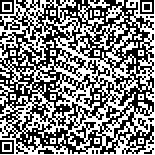| This article has been:Browse 1296Times Download 3693Times |

scan it! |
|
|
| DOI:10.13522/j.cnki.ggps.2021554 |
|
| Using CiteSpace to Compare the Research Effort of China on Drinking Water in Comparison with the Rest of the World |
|
LUO Junhua, ZHAO Weiquan, LI Wei, et al.
|
|
1. Institute of Mountain Resource, Guizhou Academy of Sciences, Guiyang 550001, China;
2. Department of Karst Research Institute, Guizhou Normal University, Guiyang 550001, China
|
| Abstract: |
| 【Objective】The safety of drinking water is of great concern to economic and social development, and is a focus of research in all countries. The purpose of this paper is to analyze the research efforts of China in this sector in comparison with the rest of the world.【Method】The analysis was based on the CNKI database and the Web of Science. The CiteSpace visualization software was used to compare the research efforts of researchers in both China and the rest of the world in five perspectives: the number of publications, number of authors of each publication, affiliations, keywords and research frontiers.【Result】①The earliest research on drinking water sources in China traced back to 1983, while the research in the rest of the world started in 1905. Researchers in the rest of the world combined have published more than their Chinese counterparts, indicating that the continued interest in drinking water in the world. ②In terms of the number of articles published by a sole author or co-authors, the international researchers have the edge. ③In terms of research topics and research methods, research in China can be divided into the following stages: proof-concept from 1983 to 1999, initial development from 2000 to 2008, prosperous development from 2009 to 2015, area-transition stage from 2016 to 2021.【Conclusion】Research on drinking water source in China and the rest of the world has a similar development history though it started much later in China. The research results have significant implications for theoretical development and practical applications of research results. |
| Key words: CiteSpace; drinking water sources; knowledge mapping; visualization; quantitative analysis |
|
|